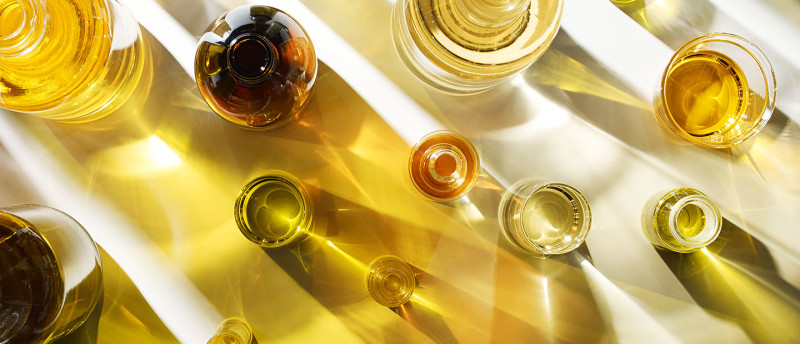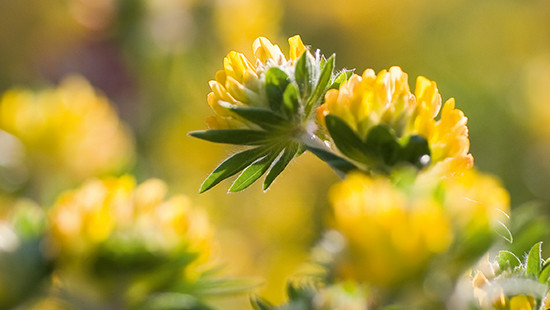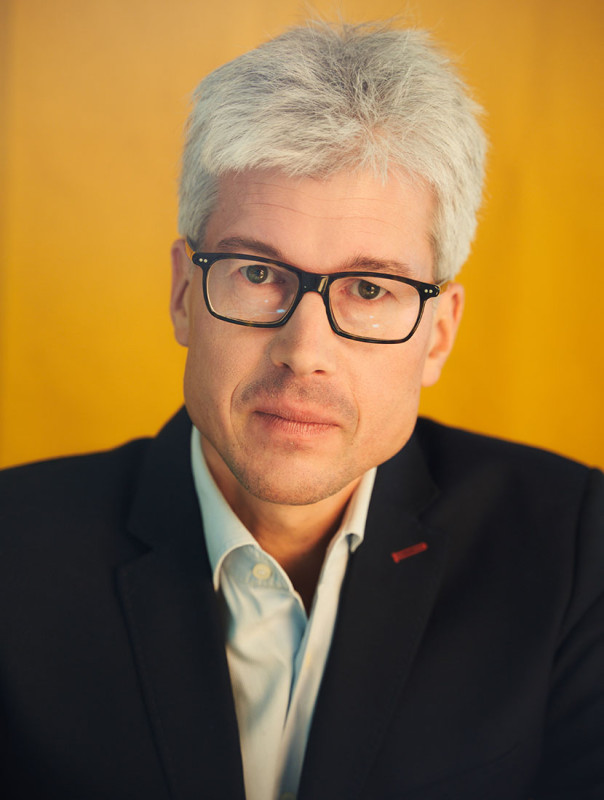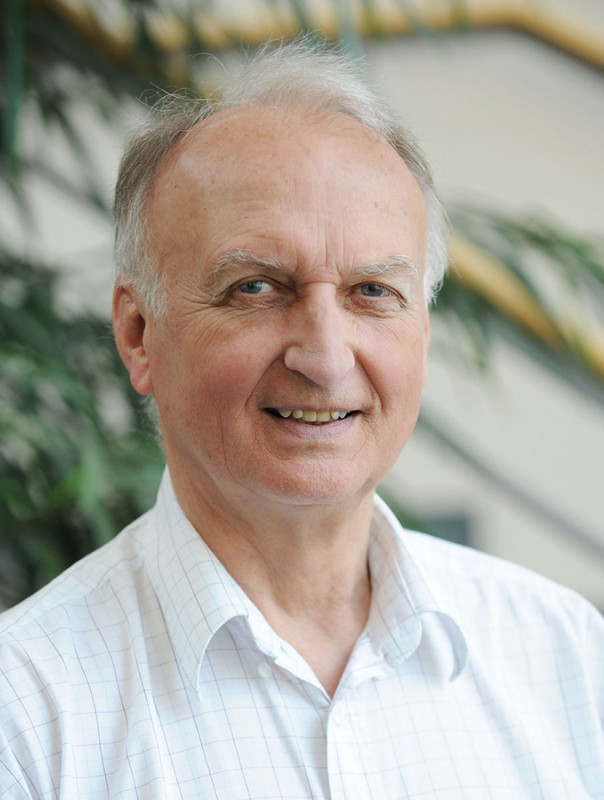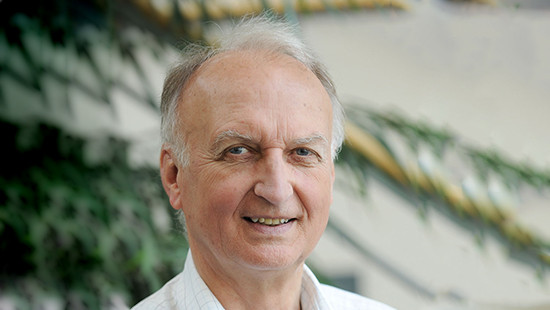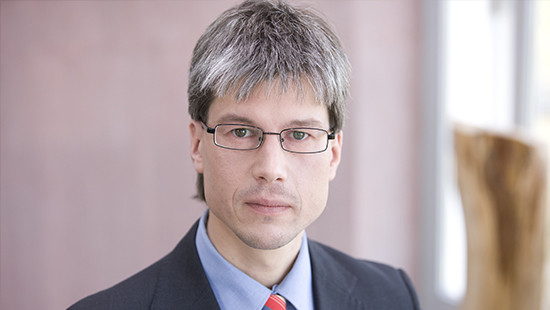A twist of modernity for the old
The art of cosmetics production and research
Would you describe your face cream as a work of art? When it comes to Dr. Hauschka Skin Care products, we believe this is a justifiable statement. And would you attribute a personality to a plant? We do so and closely study its biography when developing and producing any new cosmetic product. We ask about your skin’s needs, then look for the medicinal plants, waxes and oils that best help you meet them. We combine the ingredients in such a way that they are in harmony with one another and your skin. This is the only way to create a product with a successful, artistic composition. And only so will you enjoy the feel of the product.
We aim to create products with an artistic and effective composition. As such, we take great effort to constantly optimise the ways in which our plants and other raw materials are used in Dr. Hauschka Skin Care products. Fortunately, we already have a huge wealth of information: the knowledge and experience that we have gained through the development and production of WALA Medicines since 1935. Elisabeth Sigmund added to this knowledge base. In the 1930s, she started to study centuries-old medical books in monastic libraries. In these, she discovered forgotten medicinal plants and minerals with benefits for the skin, which she used to develop the formulations for Dr. Hauschka Skin Care products. Today, we are able to combine the knowledge from days gone by with modern methods.
We have become genuine specialists in the research of raw materials of plant origin and, in spring 2017, moved into a new laboratory building to continue this work. There, we develop methods, conduct quality controls and look at highly practical research questions posed by our colleagues. For example, the gardeners want to know when lady’s mantle, which we cultivate as an ingredient for our Soothing Mask, is at its most nutrient rich. They use this information to determine when to harvest the plant. The raw materials warehouse asks how to create the best conditions for storing the essential oils. The Development department requests a study in support of the further development of the St. John’s wort oil extract found in Rose Day Cream and Cleansing Cream. Such questions give rise to Master’s theses and dissertations, the results of which are published in international journals.
Quality control employees, who also work in the new laboratory building, conduct tests on the raw materials and the finished products to ensure that they are safe and of high quality. Authorities now demand that cosmetics manufacturers conduct extremely extensive analyses in proof of product safety. Our tests go above and beyond the required scope. We combine the knowledge that we have gained over several decades with the findings presented in the latest scientific literature and use the results to conduct additional analyses. Ultimately, this supplemented knowledge enables us to compose the best possible cosmetic products for you.
Interview
with Herwig Judex, member of the WALA Foundation, and Professor Florian Stintzing, Head of Science at WALA Heilmittel GmbH About the research, development and production of cosmetics at WALA
Herr Judex, you’ve been with WALA since 1971. At the time, Dr. Hauschka Skin Care had only been on the market for four years – as a second brand that complemented WALA Medicines. Did the knowledge of the production of medicines influence the formulations for the cosmetic products?
Herwig Judex: The formulations for Dr. Hauschka Skin Care products were developed in cooperation with doctors, estheticians and pharmacists. The experience from the production of medicines naturally played a major role in this.
How have the development and production of Dr. Hauschka Skin Care products changed over the years?
Judex: In huge ways. In the 1960s and 70s, we created products based on our experience-based knowledge. The idea was the most decisive factor. We mixed things together and tested whether the product could do what it was intended to. If so, it was produced without any major further requirements. If we wanted to assess the quality of a plant from our medicinal herb garden, we looked at its growth. If we added too much fertiliser and a plant that would usually only be 30 centimetres tall actually grew to a metre, it could not be used in production. We had the belief and inner certainty that the things which we had carefully considered and thought out were right. And this was right. Nowadays, that’s no longer how things work, of course. We have to conduct stability and application tests and provide far more detailed information about the substances. This is now a legal requirement for cosmetics manufacturers in Germany and it is important because the people of today need external, objective safety.
Experience-based knowledge used to be important. Mr Stintzing, can you analytically confirm this old knowledge now?
Stintzing: Yes. The plant that grows differently is a good example. We recently tried to domesticate chicory, i.e. to grow it in our medicinal herb garden. This is used in Soothing Intensive Treatment among other products. It ended up looking like a dandelion. You could say that its nature was distorted. It flourished too well here in our garden. The plant’s appearance differs from that of one that tends to grow in poorer quality, dry soil. You can’t create a stable aqueous extract from a plant that has grown like that. A difference in scent is also noticeable. You can furthermore demonstrate the difference analytically, for instance through the fact that the pH level doesn’t fall during the extract procedure as the lactic acid fermentation process doesn’t start. Even with all the technological advances, which are welcomed and a good thing, it is still essential to use our senses and pay attention to obvious differences – to closely monitor things. And we do this by using the experience that WALA has built up over more than 80 years.
But you can no longer bring products to the market based solely on experience-based knowledge. You have to fulfil legal requirements. What analyses do you conduct?
Stintzing: It’s about customer safety. The raw materials for our cosmetic products are tested for characteristic properties, but also foreign substances such as pesticides and heavy metals. Tests are an important means of proving and documenting a certain quality level but also of learning more about the raw materials. As such, we often test for far more things than are legally required by precisely stipulated regulations on testing. Ultimately, however, you can only do a test well if you know the raw material’s biography. For example, where the plant was grown. This is the only way for you to know what kinds of contaminants it might contain as a result of its location. And only then can you specifically test for these pollutants. If you ignore this factor, you might end up testing for completely the wrong things.
A plant’s biography is an unusual concept. Can you elaborate?
Stintzing: We think about a product based on its raw materials. We ask ourselves where the plant comes from. Where, under what climate conditions and in what soil was it grown, how was it cultivated and when was it harvested? The origin of a plant matters, as highlighted by our example of chicory. And the future, i.e. where the plant ends up, namely in the cosmetic product, is based on what has happened in the past. This is what makes the idea of a biography so important to us. Everything found in the raw materials is developed during the plant’s biographical journey. And at some point, this all ends up in the composition. Anything I don’t do prior to this, from a procedural perspective or even in terms of qualitative selection, I can no longer give to the product at a later stage.
Judex: A plant’s biography covers all the essentials. After all, we can’t get anywhere with mere facts and figures.
Is the approach of working with your senses and experience something that makes WALA special?
Judex: Yes, definitely.
Stintzing: But this only works if you are familiar with the plants. You have to know where they usually grow, what their natural environment is, what they normally look like and what is going on if they don’t look like that. In view of this, our plant laboratory technicians and employees from the Cosmetics Development and Analytical Development departments regularly help out with the harvests in our garden, during which our gardeners teach them a great deal about the plants and their special features. This forms a direct link to the raw materials, something which is extremely important as it prevents the anonymisation widely found today.
If a plant’s biography is so important, does that not mean that you can only harvest and process wild plants? It is possible to cultivate plants at all?
Judex: You can naturally also cultivate plants, for example if you want the roots or leaves to grow in a certain way. However, you always have to remain within certain limits, as is highlighted by the example of chicory.
Stintzing: The influence of the location can also be analytically proven. For example, tests have shown that edible berries from Scandinavia are richer in secondary plant nutrients than those from Central and Southern Europe. This knowledge is naturally also extremely important for medicinal plants. In addition to the temperature, the light and soil conditions also have a major impact on quality. One example of a case in which we were able to directly prove analytical differences is sage, which we use in products such as Sage Deodorant. The soil properties, such as the pH level, are particularly important for this plant. In consideration of this finding, our gardeners have created several types of soil in our medicinal herb garden as a kind of ‘new home’ for the plants, with living conditions in which they can develop what they are, their vital strengths and inner being.
Judex: Quality is a factor determined by far more than just quantity. Today, we are instructed to detect quantitative differences so as to decide whether or not a raw material is used. However, as Mr Stintzing says, quality is about the entire biography. How did the plant come into being, how were the seeds cultivated that were then sown?
Do we have to revise ‘old’ knowledge based on new findings?
Judex: ‘Revise’ is a weighted word. After all, we’re talking about adding to our knowledge. What is then done with this is a whole other matter. For instance, whether you succeed in combining the artistic process with the knowledge.
Stintzing: I can only reiterate the situation as follows: we are increasing our wealth of knowledge and building on our old knowledge and experience. However, our products also have an artistic quality about them. A product is a composition. It naturally has to be well crafted and must not separate, for example. However, the ingredients must also be in harmony with one another and with people. I firmly believe that this artistic aspect appeals to people at a certain level. They don’t have to know what is in the cosmetic product. Instead, they experience the product as harmonious or inharmonious for them. If, as a natural cosmetics manufacturer, we develop authentic products to meet customers’ needs and people like them and they help the skin, then that is good.

